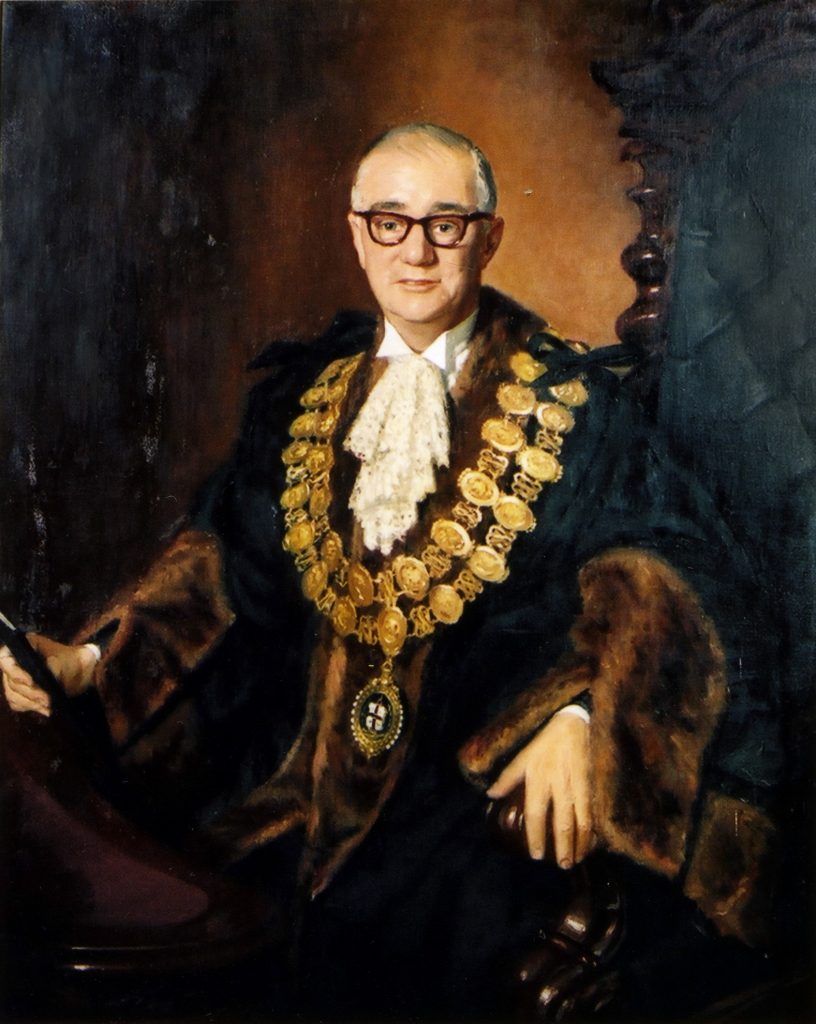Paul Fitzgerald, Sir Frank Selleck, Mayoral portrait, c1955
Summary
Frank Selleck, or Sir Francis Palmer Selleck (1895-1976), was Lord Mayor from 1954 to 1957, the years immediately leading into, and during, the 1956 Melbourne Summer Olympics. Schooled in Numurkah and Shepparton, Selleck enlisted in the AIF in March 1915. Several months later he was at Gallipoli and from there was sent to the Western Front. The first thing to be said about Selleck’s service in the Great War is that he survived; the second is that he was awarded a Military Cross. Back in Melbourne Selleck helped establish Legacy in 1923. He was its first treasurer and is credited with thinking up its name.
Selleck qualified as an accountant in 1924 and established his own firm in 1934. From there he immersed himself in business. He owned several cinemas, mostly in Melbourne’s suburbs, and was the director of a number of companies. He was a board member of the Commonwealth Banking Corporation. Selleck became a Councillor in 1949 and was elected Lord Mayor for three successive one year terms from 1954. Another Frank, Frank Roger, was appointed Town Clerk during Selleck’s time as Lord Mayor and held the role until 1980.
Paul Fitzgerald AM (1922-2017) was an exceptionally prolific portrait painter. Melbourne-based but much travelled, his list of subjects reads as an establishment ‘Who’s who’ of the last half of the twentieth century. The Queen (three times), Prince Phillip, Prince Charles, various European royals, five members of the Malaysian royal family, two Australian governors-generals, two prime ministers (Menzies and Fraser), six state governors, two premiers, fourteen Supreme Court judges, three university chancellors, one pope (John XIII), three cardinals, several archbishops, sporting champions and multiple business leaders. Indeed, a wag might even say he was slumming it doing a Lord Mayor.
Perhaps unsurprisingly, in an era when the figurative was utterly on the nose in art circles, Fitzgerald was a vocal defender of traditional realist art. His subjects knew what they liked and abstraction, pop art, colour field theory and whatever else was not among it. The traditional portrait genre was good to Fitzgerald and it must be said he was good for it.
